
C&S Propeller Adds Fillet Cut & Cold Roll and Other Specialized Repairs.


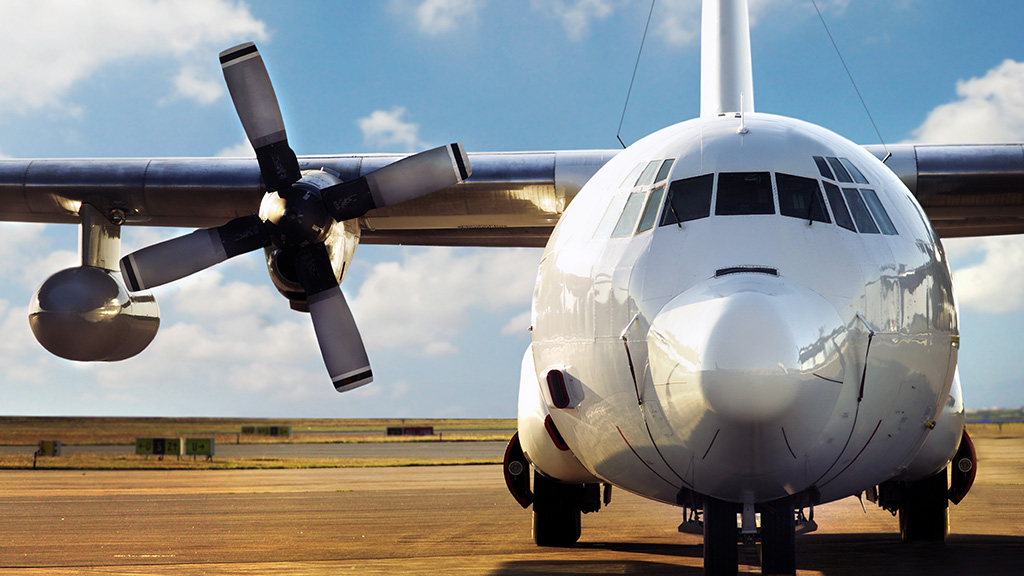
The Lockheed Martin C-130 Hercules aircraft, and its civilian counterpart, the L-100, can safely be referred to as the most successful aircraft of their kind ever made. When speaking of the various missions and uses the planes have been put through, it’s almost easier to mention what they haven’t been used for over their long operational life.
The C-130 was originally developed in the early 1950’s to answer the U.S. military’s need for an aircraft that could transport large loads of equipment and personnel and be capable of operating out of short, unimproved airfields. Its first flight was in 1954, and it almost immediately became the go-to workhorse of the military. It saw extensive use in Vietnam and every theater of war since then, most notably in Iraq and Afghanistan.
It performed so well that just ten years later Lockheed Martin decided to produce a civilian version, the L-100, which first took to the skies in 1964. Sales of the aircraft were initially slower than hoped, so Lockheed redesigned the L-100 in 1967, stretching the airframe and significantly increasing the cargo capacity. They did the same in 1969 to produce the L-100-30 version, which has proved to be the most popular with the civilian market.
Both the C-130 and the L-100 have earned a sterling reputation for safety, reliability, and versatility. They have been deployed for a variety of mission, both military and civilian.
The United States military and that of several other nations around the world has primarily used both the C-130 and the L-100 for the mission it was designed for, to move troops and equipment where they need to be. However, with more than 40 variations of the aircraft, it has proven useful in many other roles, most notably as the AC-130 gunship that gained fame in Vietnam. Other missions include:
Some variants have even been equipped with skis for duty in the polar regions.
In mid-2009 there were 36 L-100 aircraft in use by both military and civilian organizations around the world. In addition to most of the duties listed above as they can be applied to peacetime needs, the L-100 has been used primarily for air cargo and air charter services, and also by several airlines on regularly scheduled routes. It is also favored for transporting government personnel and other VIPs.
We have three current customers who use the C-130 Hercules of L-100 aircraft.
Coulson Aviation uses a fleet of C-130s to fight fires around the globe.
Lynden Air Cargo, another customer of C&S Propeller for maintenance, repair, and overhaul services of the 54H60 Propeller system, uses both the L-100 and C-130 Hercules for hauling freight. Lynden Air Cargo has the equipment, aircraft, and the expertise to move your cargo to remote locations throughout Alaska, Canada and destinations around the world.
A photo posted by C&S Propeller (@candspropeller) on
Finally, another customer of ours, International Air Response, is a global provider of specialized aerial services. Founded in 1976, the company owns, maintains, and operates a large fleet of Lockheed C-130 Hercules aircraft. IAR provides safe, efficient, and effective emergency and non-emergency aerial services to a wide variety of government and private sector clients around the world.
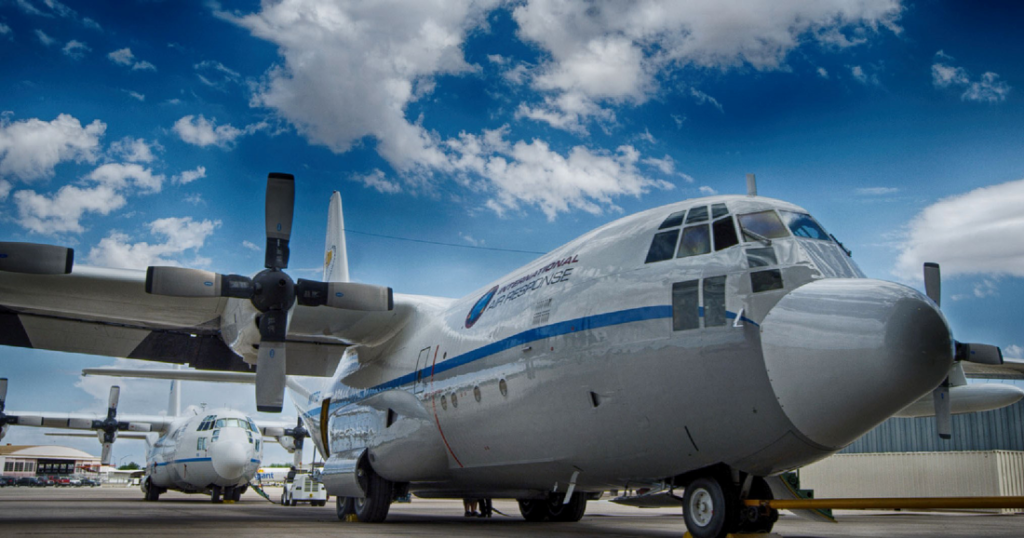
Both the C-130 and the L-100 appear to have many more years of service ahead of them with upgrades to their systems, especially modern avionics technology.
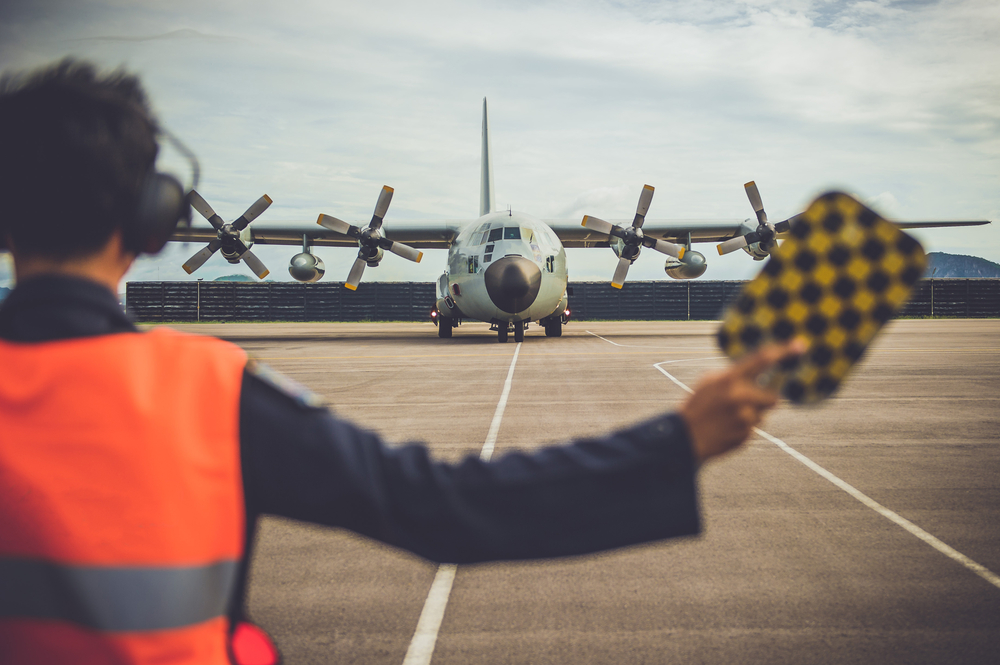
On April 7th, 2015, the Lockheed Martin Corporation celebrated the 60th anniversary of one of its most long-lived and fruitful aircraft, the legendary C-130. It was on that date that the first production model was rolled out of their factory in Marietta, Georgia back in 1955, where the governor smashed a bottle of water from the Chattahoochee River across its nose to christen it.
At the 2015 celebration, Governor Nathan Deal recreated that ceremony on a Super Hercules, while C-130 number 2,500 was coming to life on the assembly line inside the factory. The previous year, the historic aircraft reached another 60-year milestone. On August 23rd, 1954, the aircraft, then designated as the YC-130 took flight for the first time in Burbank, California.
The Lockheed Company has been manufacturing the C-130 longer than two of its other major hits, the iconic B-52 bomber and the U-2 spy plane. The U.S Congress has had a long-standing love affair with the aircraft, providing generous funding for new planes and upgrades, even in the face of resistance from the Pentagon. One defense analyst has called it the ‘Energizer Bunny’ of the aerospace industry. It has been convincingly argued that the C-130 is the most successful aircraft in military history, certainly the oldest in continuous production.
So what keeps this bunny ticking?
The C-130 was conceived to meet the U.S. military’s need for a tactical transport capable of delivering a large payload of troops and equipment over medium distances, landing and taking off on short, unimproved airstrips. The fact that it has performed that role exceptionally well constitutes for its phenomenal success. However, that is not all. There are well over 100 variations of the C-130, performing almost every mission imaginable including firefighting, rescue operations, ocean patrol, oil and mining industry applications, humanitarian aid and more. U.S. Special Forces have used the AC-130 gunship version to significant effect, and there’s talk of outfitting it with a laser weapon. Moreover, Lockheed has seen an ever-growing demand for the civilian version, the L-100.
The newest version, the C-130J Super Hercules, has brought a lot of new capabilities to the table, with advanced overhead displays, more powerful engines, improved defensive countermeasures, a greatly increased unrefueled maximum range, greater airspeed and the ability to takeoff on only about 60% of the runway distance required by earlier versions.
In addition, the C130 has been made legendary for also retaining the basic design, its rugged reliability and relatively low-cost to operate and maintain. The C-130 also boasts one of the lowest accident rates of any aircraft in the U.S. arsenal. It has truly proven itself capable of doing almost anything short of dogfighting.
The C-130 is currently in use in more than 70 countries around the world. It has fought in Vietnam, Iraq, Afghanistan and many other small conflicts and police actions. It has flown to both the North and South poles, and seen service just about everywhere in between. It seems poised to remain the go-to workhorse aircraft of its type well into this young century.
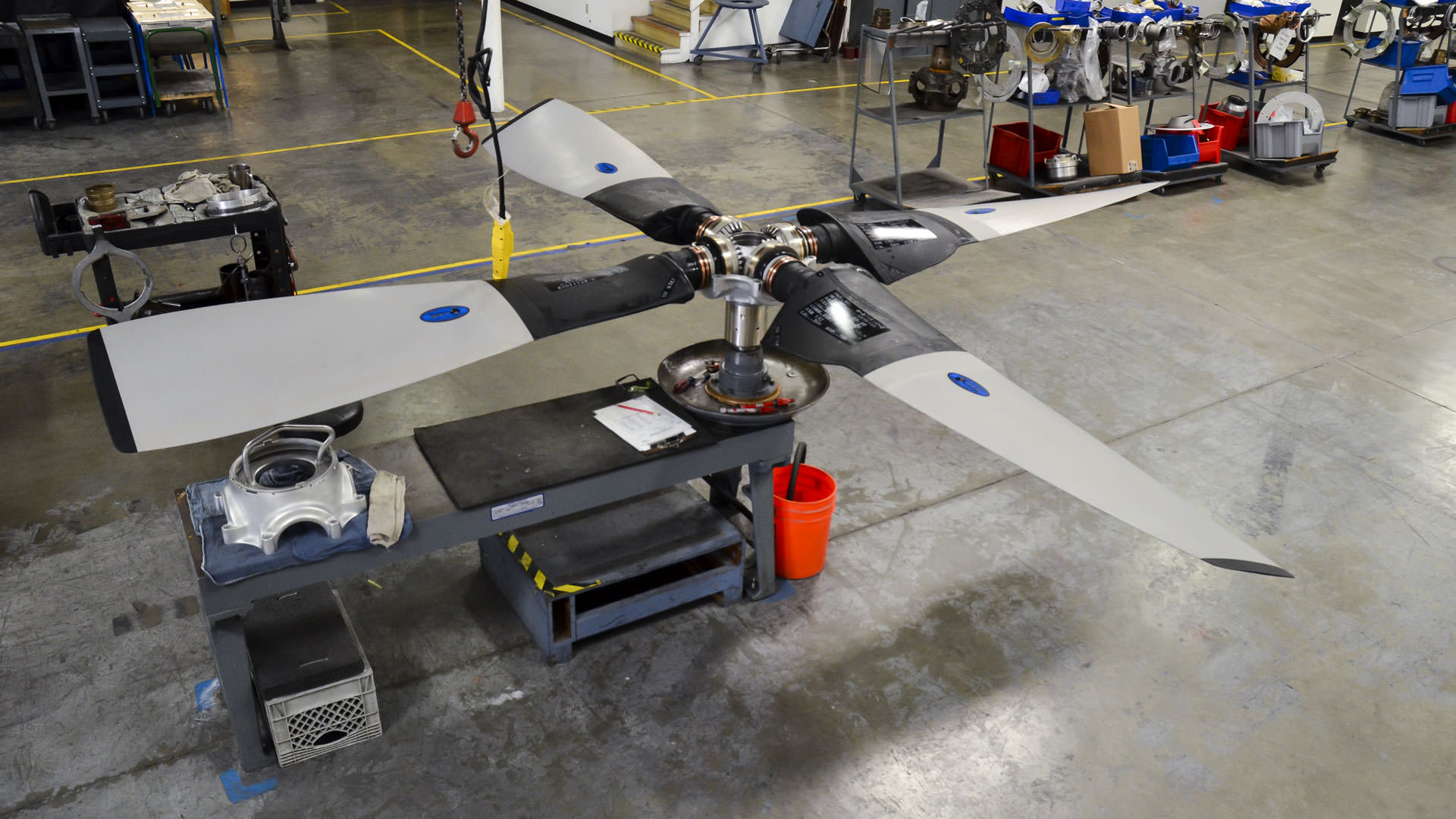
In today’s blog post we’ll cover the difference between the 54H60 propeller system and the Dowty R391 propellers. At C&S we provide MRO services for the 54H60, but we get asked all the time about the differences between these two propeller systems that both power the C-130 aircraft.
The C-130 Hercules is one of the most successful aircraft ever built. Known affectionately by the men and women who have served on them as the ‘Herc’, among many other monikers; it has been outstanding at performing its primary mission.
Conceptualized and designed for the U.S. Air Force in response to the evident and changing battlefield realities by the Korean War, Lockheed flew the first prototype, designated then as the YC-130, in 1954; the first operational aircraft, then known as the C-130A, were delivered to the USAF in 1956. The Herc was designed to deliver large payloads onto rough landing strips, with a short takeoff and landing distance. It performed its duties admirably and has since been the first-line workhorse of the military during all of America’s wars and peacetime operations, as well as being heavily utilized for civilian roles. Its versatility is legendary.
During its long operational life, the C-130 has been fitted with four different propeller systems, including Curtis Electric propellers, three-bladed Aeroproducts propellers, the four-bladed Hamilton Standard 54H60 and the six-bladed Dowty R391 propeller, all of them excellent and having their unique strengths, weaknesses and purpose. We’ll take a quick look at two of the most prominent systems, the Hamilton Standard 54H60 and the Dowty R391.
The Dowty R391 propeller system has been used on all the newest version C-130J Super Hercules aircraft. It utilizes a six-bladed, swept-back design with ARA-D/A airfoils, with individual blades constructed of glass and carbon fiber with an inner core of polyurethane foam. A single lever manages the electronic prop control system, which is also integrated with the engine controls, providing simplified operation. This, along with other design features, makes the system very lightweight while delivering good takeoff and climb performance, as well as low levels of noise.
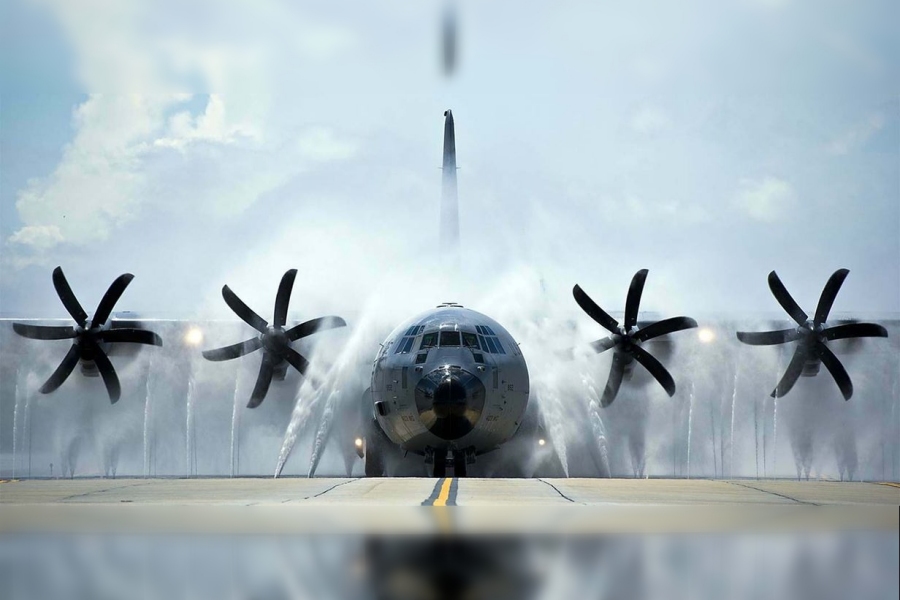
Maintenance on the R391 has also been simplified as much as possible by its modular design and hub construction, a minimum of parts and the lack of complicated and fragile mechanical linkages to the cockpit.
Besides providing power for the C-130J Super Hercules, which is serving in the armed forces of several countries around the world, the Dowty R391 propeller system is also used on the Alenia Aeronautica C-27J Spartan tactical transport and on the ShinMaywa US-1A Kai amphibious aircraft, owned and operated by the Japanese Self-Defense Forces.
Powered by Rolls-Royce AE 2100D3 engines on the C-130J, it has consistently delivered safe and dependable service since the mid 1990’s.
This system uses four propeller blades and is used on many of the legacy models in the C-130 fleet, as well as on the civilian and commercial version, the L-100. It is a constant speed, hydraulically-operated, full-feathering system, providing excellent control and performance in a variety of flight configurations.
Other features include a pitch lock regulator that prevents a sudden decrease in the angle of the blades in the event of a system malfunction, such as the loss of the hydraulic pressure necessary for controlling the propellers, or in the event of an over-speed condition of 103.5%, as well as a low-pitch prop assembly that prevents the propeller blades’ pitch from decreasing below a preselected angle when in the flight range.
The HS 54H60 uses a blade heater for de-icing, and also utilizes a contact de-icing ring to ensure that there is no buildup of ice on the tips of the blades; this can be critical for maximum performance.
The Hamilton Standard 54H60 also has a long history of reliable service.
The 54H60 propeller system have been in service for decades while the Dowty R391 has been in service since 1996. Both will remain a staple of the C-130 fleet for many years to come.

Today we talk about the nicknames for the C-130 Hercules. Humans have always given affectionate nicknames to the things they love and mocking nicknames to those they do not. Ships, horses, dogs, and mothers-in-law often acquire monikers other than their given names, Old Ironsides and ‘old battleaxe’ for instance, and in the military, weapons, tanks, sergeants, and generals all earn titles or callsigns describing an individual trait or quirk. In civilian life, cars, trucks, bulldozers, drinking buddies, cities, and neighborhoods – just about anything can acquire a nickname. Moreover, aircraft are no exception.
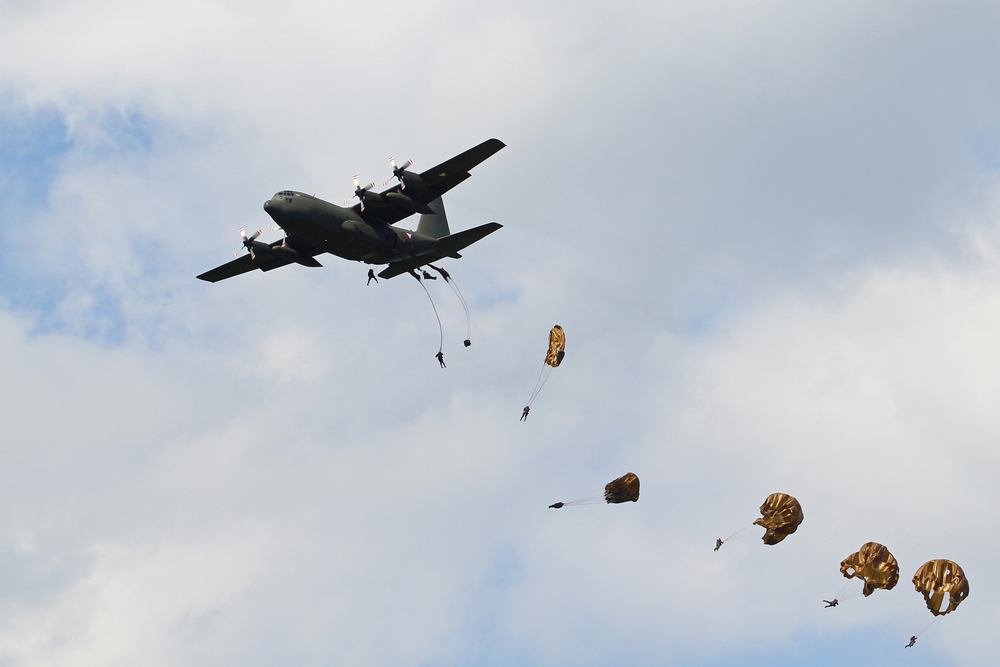
There’s the Fairchild A-10 Thunderbolt, better known as the Warthog for its distinctive, and many say ugly, design, the Lockheed U-2 spy plane, sometimes called the Useless Deuce, the Grumman F-14 Tomcat, also referred to as the Turkey, and the McDonnell Douglas F-15 Strike Eagle, which somehow gained the nickname of Tennis Court. However, few aircraft have been called by as many humorous names by the men and women who have flown and served on them than the much beloved and honored workhorse, the Lockheed C-130 Hercules Aircraft. Here’s a look at a few of the most popular ones.
The popular C-130 Hercules is used by many military and air forces around the world. With the military especially, we’ve grown accustom to intresting nicknames of the tools the military uses. Here’s a look at a few of the most popular ones.
Responsible for the maintenance of a C-130 Hercules Aircraft? C&S Propeller is your partner to maintain the 54H60 Propeller System. Contact us today for information on our services.
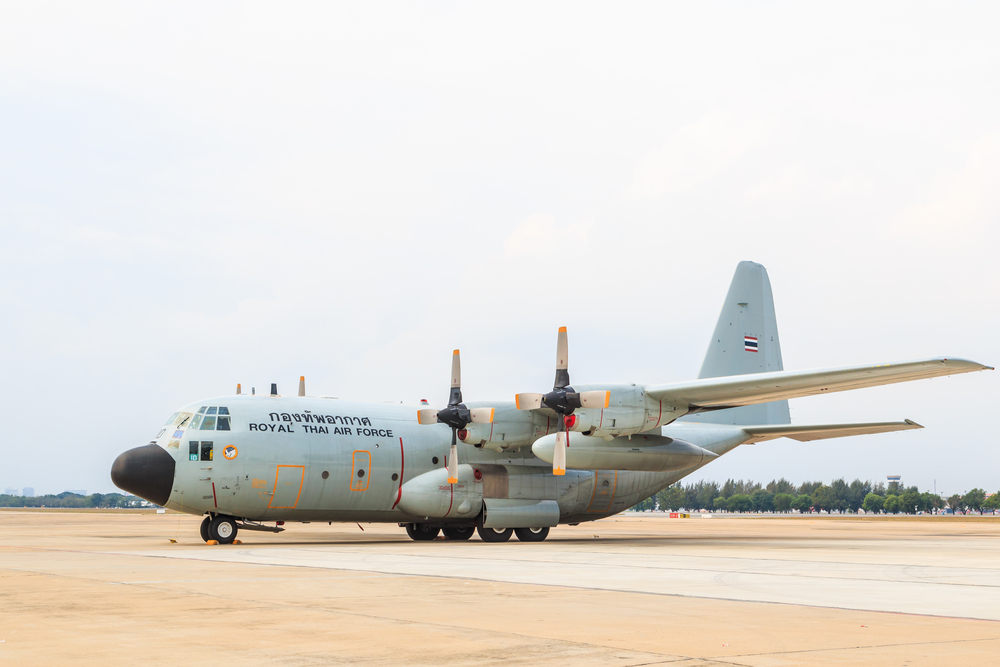
Designed originally for transporting troops and equipment to war zones, the C-130 Hercules aircraft has been used for civilian and military applications around the globe. Of course, some of its most notable uses stem from its role in U.S. military might since its inception.
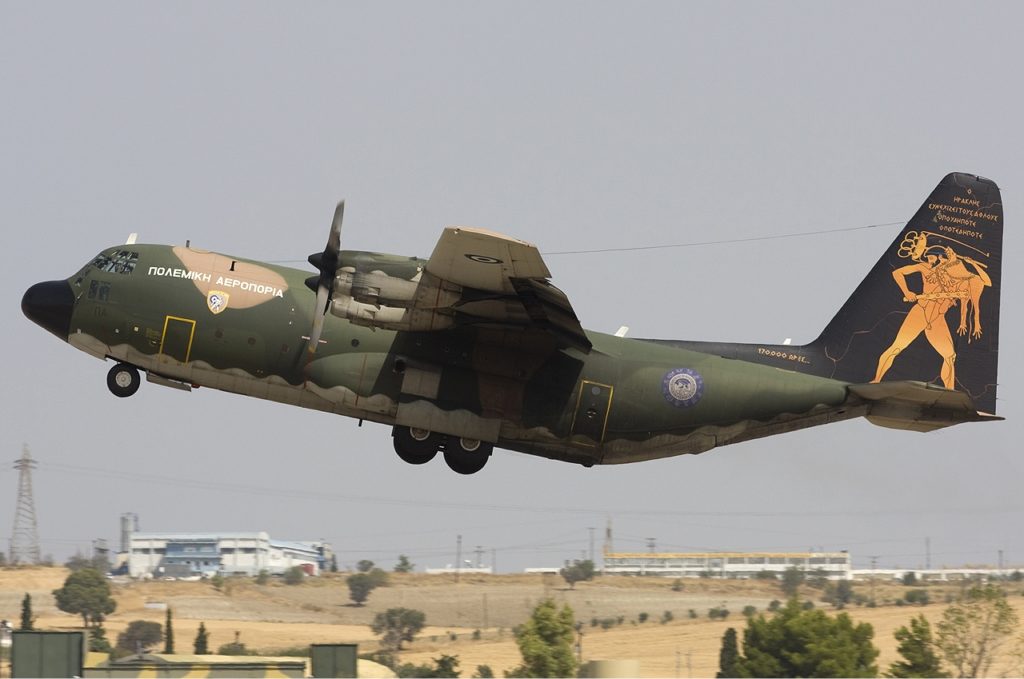
However, the versatility, fuel efficiency, and advanced technology have made the “Herc” an ideal choice for foreign Air Forces on nearly every continent, including the following.
North America
Africa
Asia
Europe
Oceania
The Royal Australian Air Force and Country Fire Authority, part of Australia’s military, operate C-130s, but an exact number is unknown.
A video posted by C&S Propeller (@candspropeller) on
Final Thoughts
The C-130 Hercules aircraft changed the world’s view on standard Air Force equipment, and while it has fallen into museums as the history of some countries’ Air Forces, it continues to be an integral part of modern Air Force capabilities. Only time will tell how truly expansive the use of future generations of the C-130 will become, but continued maintenance will take the C-130 deep into this century.
Sources
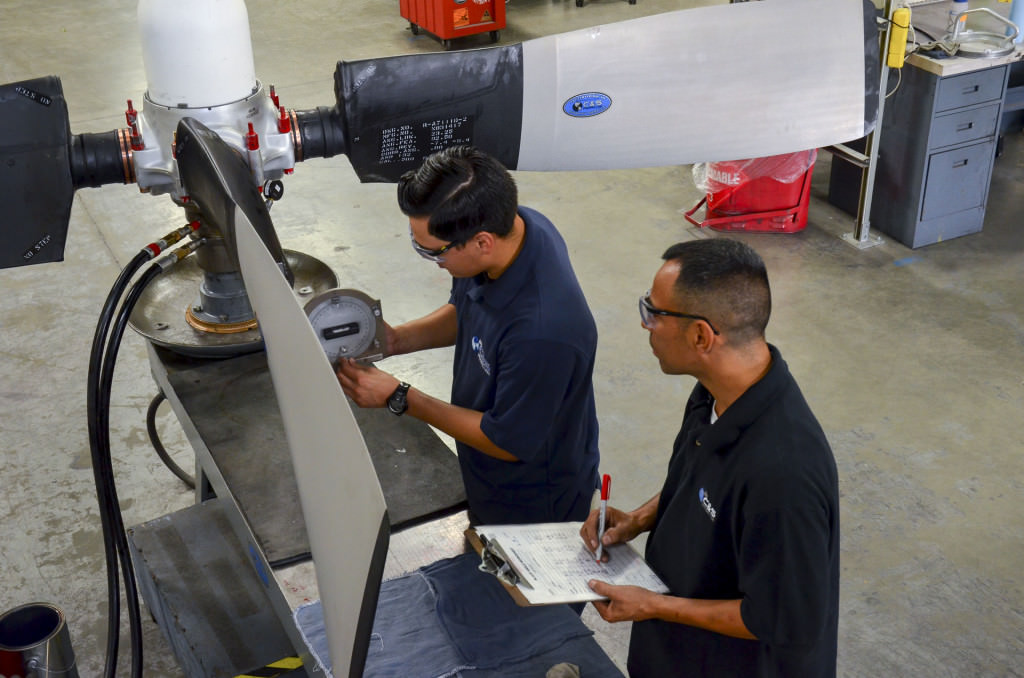
The C-130 Hercules has a rich, diverse history, ranging from its origins in military applications to current humanitarian efforts, but part of the driving force behind the might and superiority of the aircraft lies in its propeller system. Four different propeller systems have had the honor of being used to help the C-130 take flight, including Curtis Electric propellers, three-bladed Aeroproducts propellers, the four-bladed Hamilton Standard 54H60 and the six-bladed Dowty R391 propeller. However, all active C-130J aircraft employ the R391. As a result, a thorough understanding of the 54H60 propeller system is essential to keeping older model C-130s and modern L-100 models in operation today.
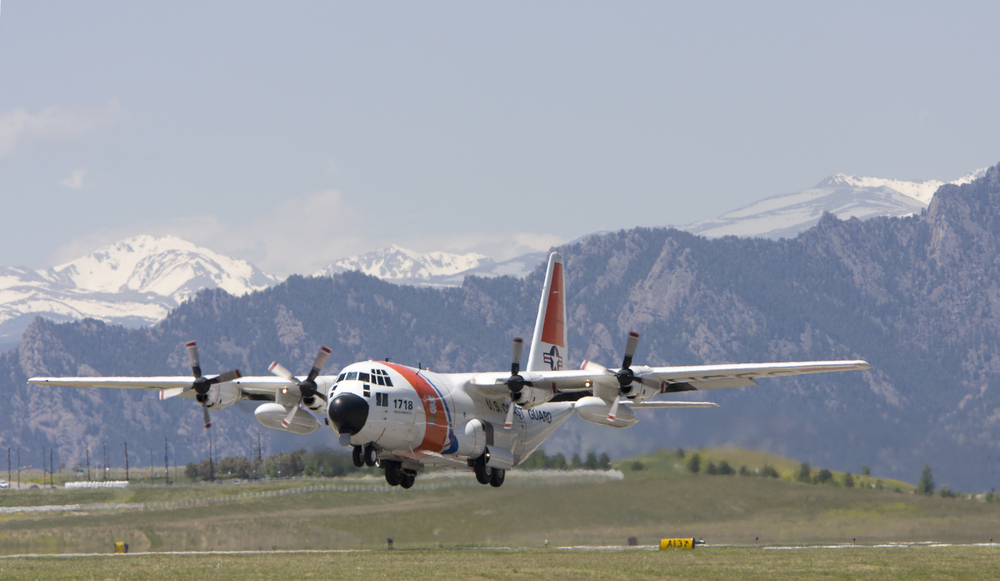
The components of the 54H60 propeller system have similar names to other propeller systems, explains the Navy BMR. Some of these components include the following:
The 54H60 propeller system is made of up rotating and non-rotating parts. The rotating portions of the propeller system include the barrel assembly, four blade assemblies, and the following components:
Knowing more about the composition of the 54H60 propeller system is the first step toward keeping the legendary “Herc” in service. However, the Herc’s 54H60 propeller system is much more involved in operation than simply identifying its basic parts, and we will dive further into that part of our discussion in Part II.

The C-130 Hercules is a marvel of modern military warfare, reconnaissance, and research capacity. It has been an icon of both imagination and military might since the mid-1950s, and it has survived through many different administrations. So, you must ask yourself, “What makes the C-130 a needed resource, and how have its capabilities changed over time?”
What’s the Purpose of the C-130?
The C-130 Hercules was originally designed to provide tactical deliveries of both supplies and troops to hostile areas. However, engagements in differing landscapes and the demands of modern warfare resulted in changes in the tactical usefulness of the C-130. For example, it became what some might describe as a spy base during its days as an electronics reconnaissance aircraft, providing radar imaging and housing antenna equipment in “faux underwing fuel tanks,” reports MilitaryFactory.com. Meanwhile, its usefulness grew more intriguing as different variations were created to meet the needs on the ground.
While Lockheed Martin built, the original C-130 with dirt runways and dense jungles in mind, modern uses of the C-130 range from military missions to humanitarian efforts The C-130 is capable of a maximum payload of 44,000 pounds, and even those in charge of its ordering at the Pentagon seem to have difficulty letting it go. In 2005, Secretary of Defense Donald Rumsfeld attempted to kill the C-130J program, but the Air Force presented such high costs associated with ending the program, to the tune of more than $1.1 billion, Rumsfeld allowed the program to continue.
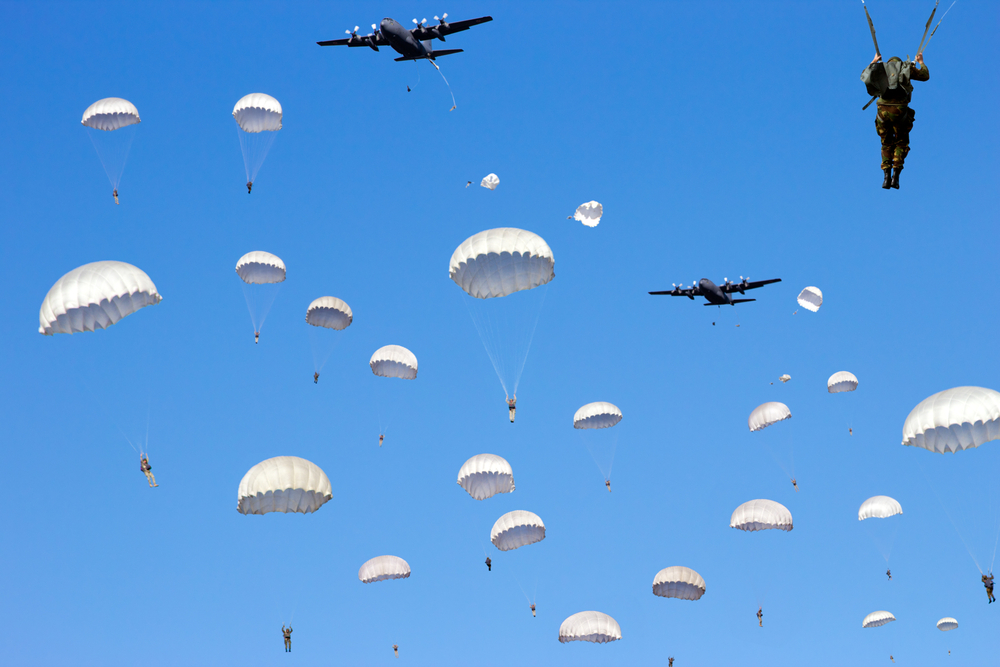
How Has the C-130 Changed Over Time?
Since 1998, the C-130J has been the most recent configuration of the first aircraft’s design, marking the latest of a whole lineup of different shapes. In some cases, you may not have even realized the plane before your eyes was a C-130 due to post-manufacturing changes made to the aircraft by the purchaser.
Civilian uses of the C-130 were listed under different names, including the L-100. However, remarkably, the C-130 has still changed how the modern world lives and functions. It has not been the star of Hollywood shows, but the aircraft has become a trademark of sorts in airshows and civilian applications too. At other times in the far reaches of the world, the C-130 is the go-to choice for restocking the National Science Foundation’s research station at the South Pole and is frequently used by International Air Response, providing safe, efficient, and effective emergency and non-emergency aerial services.
Only time will tell how the C-130 evolves into the 21st century. Within a few years, it could face pressures from Congress to end production, or continued lobbying may make this aircraft the choice of the military for the next 100 years. However, the global brand of the C-130 means the opportunities and expectations are endless, and no one knows how the aircraft will shape the future of civilization. In the interim, the existing C-130s will need diligent maintenance, cost effective repair, and overhaul to keep their usefulness in both military and civilian situations.
If nothing else, the amazement felt when seeing this behemoth of an airplane take to the skies cannot be overstated. So, the next time you see a huge military-style aircraft soaring overhead, think about what it means to innovation and the history of a world connected by the power of flight and invention.
Need MRO services for the 54H60 C-130 Aircraft Propeller system? Contact us today.
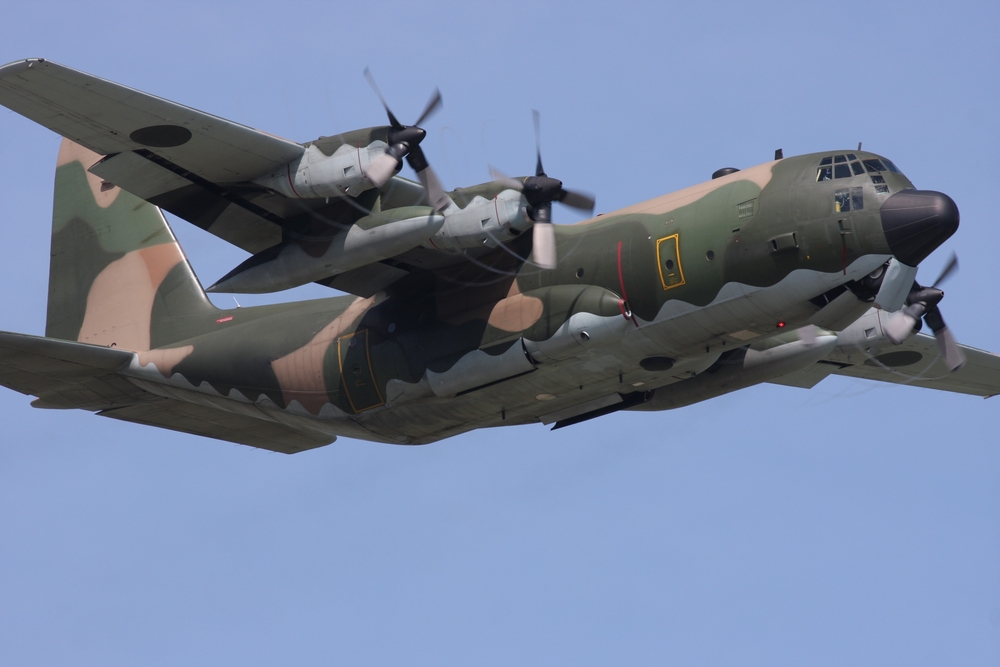
The C-130 Hercules, otherwise known as the “Herc,” is one of the most easily recognized and versatile aircraft around the world. The various models of the C-130 have flown in both combat and civilian missions, and the applications of the plane are practically endless. Additionally, the versatility of the aircraft and the legacy of its creators have made the C-130 into a staple of modern aviation and exploration. Since the aircraft has had so many different named configurations, ranging from the C-130A to the L-100, you need to understand the history behind the C-130’s concept design and why it has been so popular among both military and civilian officials.
In 1951, the United States Air Force (USAF) was heavily involved in the Korean War. Hostile areas and rough, dirt-only runways were making the USAF’s existing aircraft difficult to utilize fully. Moreover, existing aircraft were incapable of delivering the thousands of paratroopers, ground soldiers and supplies needed to continue the war effort. However, the problems continued as the large-scale needs were expanding in conjunction with the necessity of a low-altitude, high-lift transport. In fact, the aircraft’s namesake comes from the legendary 12 labors endured by the Greek demigod, Hercules.
Lockheed started working on prototype designs, with Lockheed basing those designs on existing aircraft made by the company. A “high-winged, four-engine design” from Lockheed, explains MilitaryFactory.com, was adjusted to meet the control and low-altitude needs of the USAF. On August 24, 1954, the first version of the C-130 Hercules, the “YC-130,” flew in a demonstration for the USAF. Impressed with its capabilities, the USAF ordered this series of aircraft, and by December 1956, the first deliveries of the C-130A began.
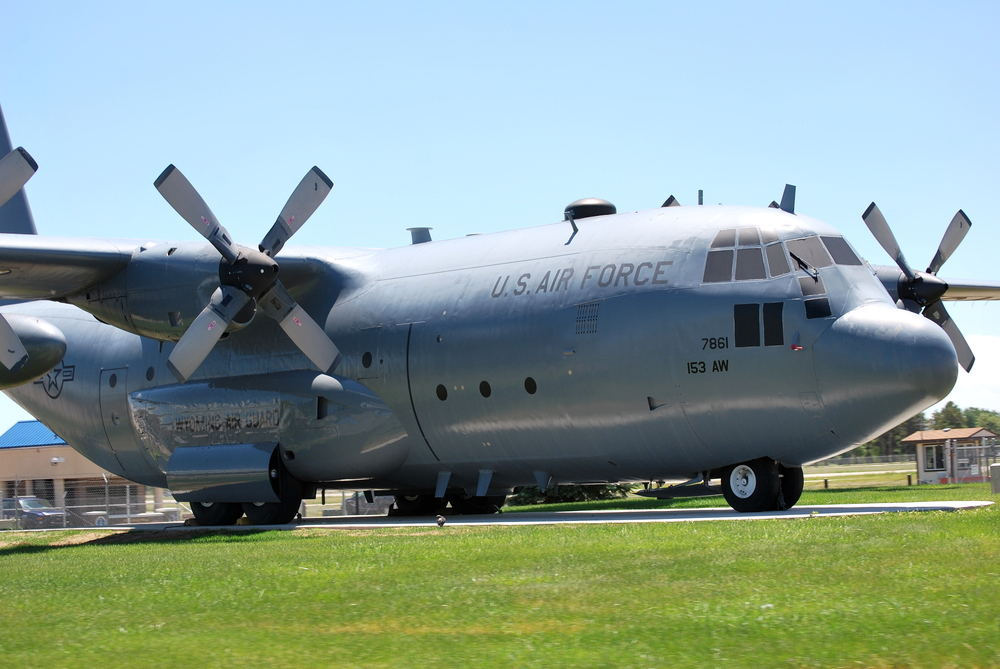
As seen in the photo above, the C-130 Hercules, has the 54H60 Propeller System, marked by the 4 blades. A propeller system that C&S Propeller has worked on for decades. Within three years, engineers updated the engines and maximized the efficiency of each of the four-bladed propeller units, which expanded the operational ranges of the C-130. As a result, production of this line, the C-130B began in 1959, and soon, the C-130B-II took on the duties of a reconnaissance mission, providing radar imaging and housing antenna equipment in “faux underwing fuel tanks,”. However, winter needs became apparent, and the C-130 was adapted again with landing skis for Arctic service to become the C-130D.
The Pentagon stopped ordering all C-130s 25 years after its production began due to a surplus of aircraft during the Carter administration. Meanwhile, the Air Force had begun a search for a more efficient, medium-sized aircraft for similar jobs. Rather than going silently into the recesses of history, Lockheed used a congressional add-on tactic to sell another fleet of 256 C-130s to the Air Force. While the Air Force may not have needed so many new aircraft, one congressional study did find that the Air Force would have ordered at least five C-130s regardless. Of course, part of this add-on was reinforced through extensive lobbying and company-spurred research studies that highlighted how useful the C-130 could be in virtually any situation.
The first C-130 was delivered in 1956 to Ardmore AFB, OK. The City of Ardmore wanted to refurbish the plane and return it to its original unit, the 463rd Troop Carrier Wing. At the time, they were at Dyess AFB, TX and this is where the plane rests for all to see.
Although some may make a case against the C-130 and Lockheed, the modern world would be missing a piece of its heart without this aircraft. It has a history as rich as that of the U.S. and the only way to ensure the legacy of the C-130 understands its origins and how to apply to destinations yet to be explored. So, naturally, you might start wondering how it is being used today, which we will discuss in Part II.